PROBLEM STATEMENT
In many industrial operations, the management of transportation assets and logistics poses significant challenges, often resulting in inefficiencies, delays, and increased costs. Traditional methods of coordinating transportation, such as manual tracking systems or reliance on disparate software solutions, lead to a lack of real-time visibility, poor resource utilization, and difficulty in ensuring timely deliveries.
Hence, there is a critical need for an industrial transport management app that offers a comprehensive solution to streamline the transportation process within industrial facilities. This app should enable seamless coordination and monitoring of transportation assets, including trucks, containers, and cargo, while optimizing routes, schedules, and resource allocation. Key features would include real-time tracking of assets, automated scheduling and dispatching, intelligent route optimization, maintenance tracking, and integration with other relevant systems such as inventory management and supply chain software.
By addressing these challenges, the goal is to improve operational efficiency, reduce costs, minimize downtime, enhance safety, and ultimately, optimize the overall transportation process within industrial settings.
Most of the industrial transportation companies relay on traditional excel sheets and paper documents to oversee their complete transport operations.

Purchase Vs Expenses Report
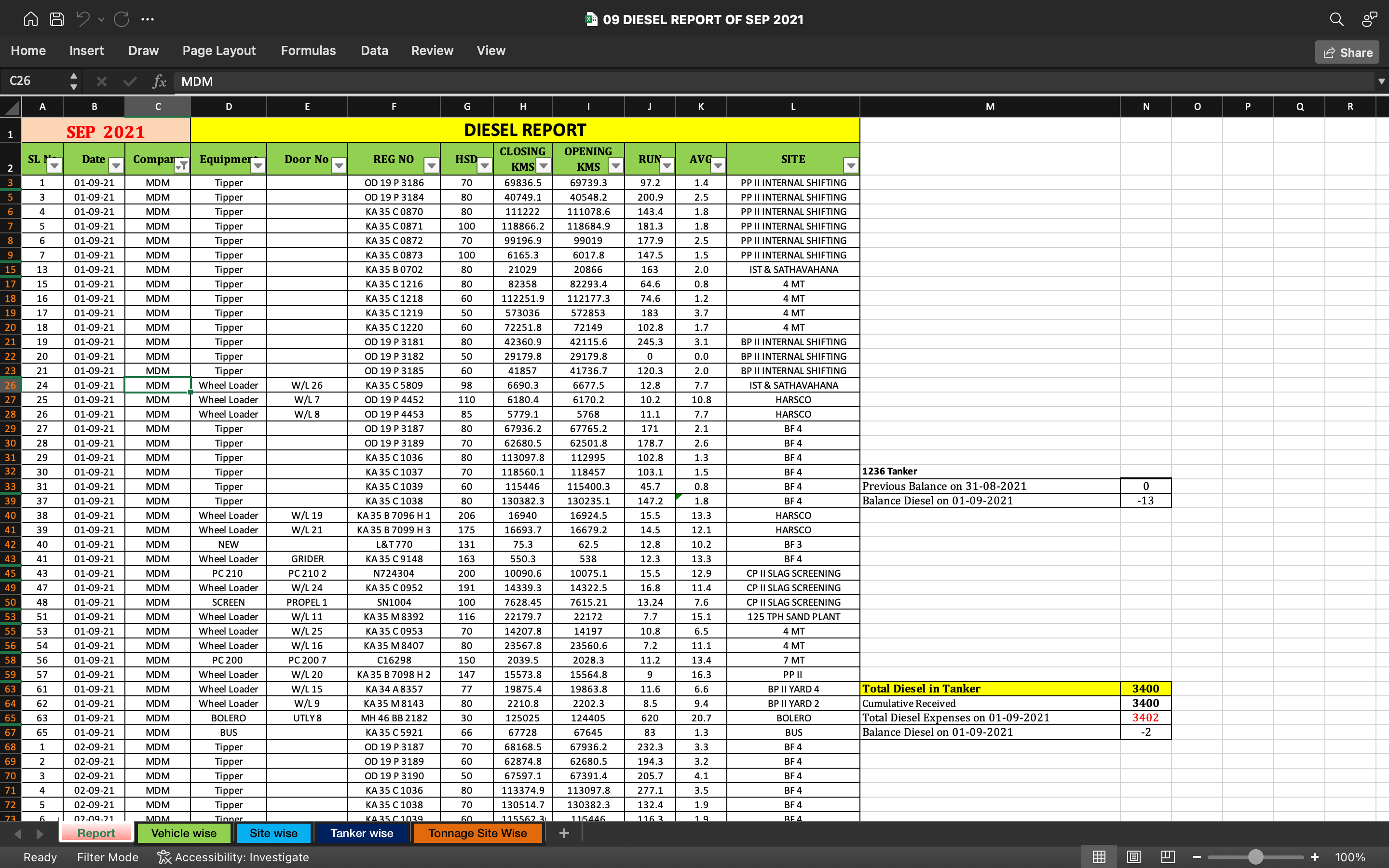
Diesel Report

Vehicle inspection checklist
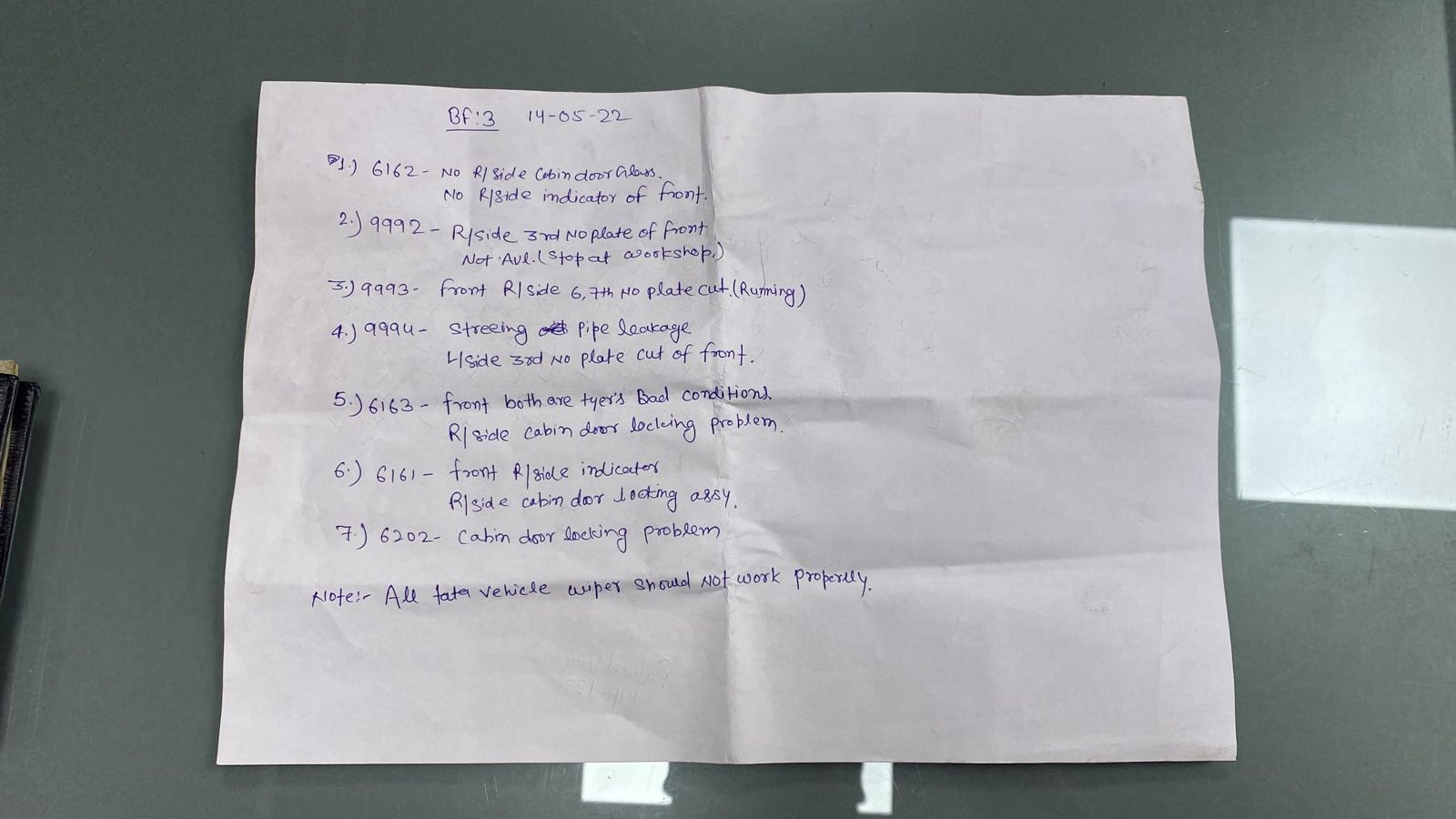
Vehicle inspection checklist
RESEARCH
- Conducted user interviews with operators, supervisors, and stakeholders to understand pain points and requirements.
- Analyzed existing systems, identifying usability issues and areas for improvement.
- Researched industry standards and best practices in UX design for industrial applications.
USER PERSONA’s
Gathered insights from various stakeholders involved in the transportation process within industrial settings. Here’s an outline of the user person’s involved:
Krishna
Data Operator

Krishna is a 24-year-old data operator working at a large-sized industrial transportation company.
Problem: Krishna often faces the challenge of complex and inconsistent data formats
Goal: Krishna’s primary goal is to ensure accurate and error-free data entry to maintain the integrity of the company’s database.
Ranjit
Inventory Store Operator

Ranjit is responsible for managing the store’s inventory, including receiving shipments, stocking shelves, conducting regular inventory checks, and processing returns.
Problem: Keeping up with manual inventory management processes and paperwork, which can be time-consuming and prone to errors.
Goal: Streamline inventory management processes to improve efficiency and reduce operational costs.
Piyush
Manager

Piyush own’s a transportation and human resources company. He is responsible for overseeing the day-to-day operations of a company, including customer engagement, and strategic planning.
Problem: Customer appointment are managed by phone
Goal: Keeping up with advancements in technology and implementing new systems or tools to improve operations can be daunting and requires careful planning and execution.
Pavan
Super Admin

As the super admin, Pavan is responsible for overseeing the entire system, ensuring its smooth operation, security, and alignment with the organization’s business objectives.
Problem: Ensuring data accuracy, consistency, and integrity across various modules and databases within the system can be challenging, especially as the organization grows.
Goal: Pavan’s primary goal is to ensure the reliability and availability of the system, minimizing downtime and disruptions to business operations.
WIREFRAMING & PROTOTYPING
- Developed wireframes based on user feedback and research findings.
- Created interactive prototypes to visualize the proposed solutions and gather further feedback.
ITERATIVE DESIGN
- Collaborated closely with the client and stakeholders to iterate on designs based on feedback.
- Conducted usability testing sessions to evaluate the effectiveness of design iterations.
IMPLEMENTATION
- Worked closely with developers to ensure seamless integration of design elements.
- Provided design assets and specifications to support development efforts.
EVALUATION
- Conducted post-implementation evaluations to measure the impact of the redesigned system on user satisfaction, efficiency, and safety.
HI-FEDELITY MOCKUPS
Reports
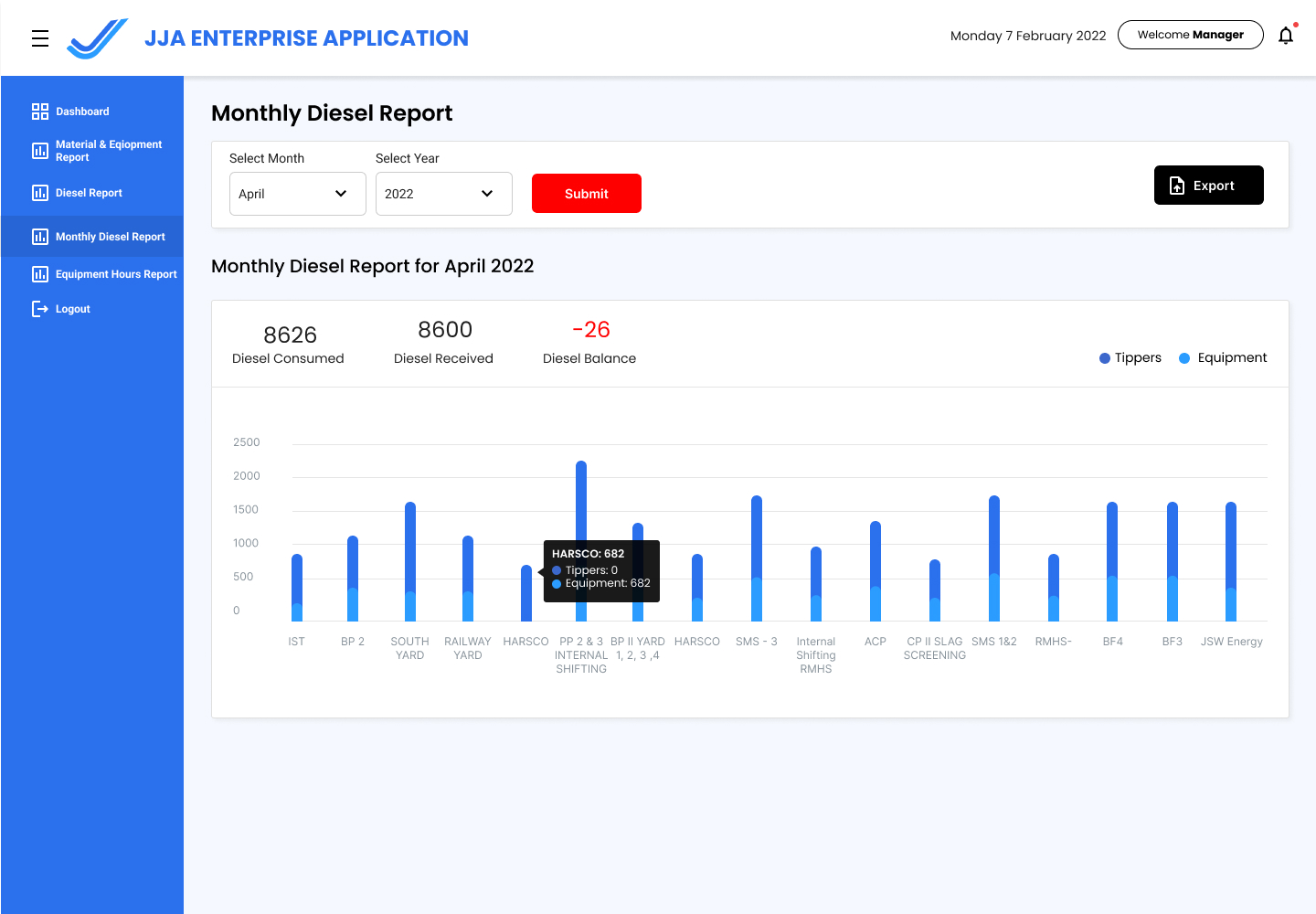
Monthly Diesel Report
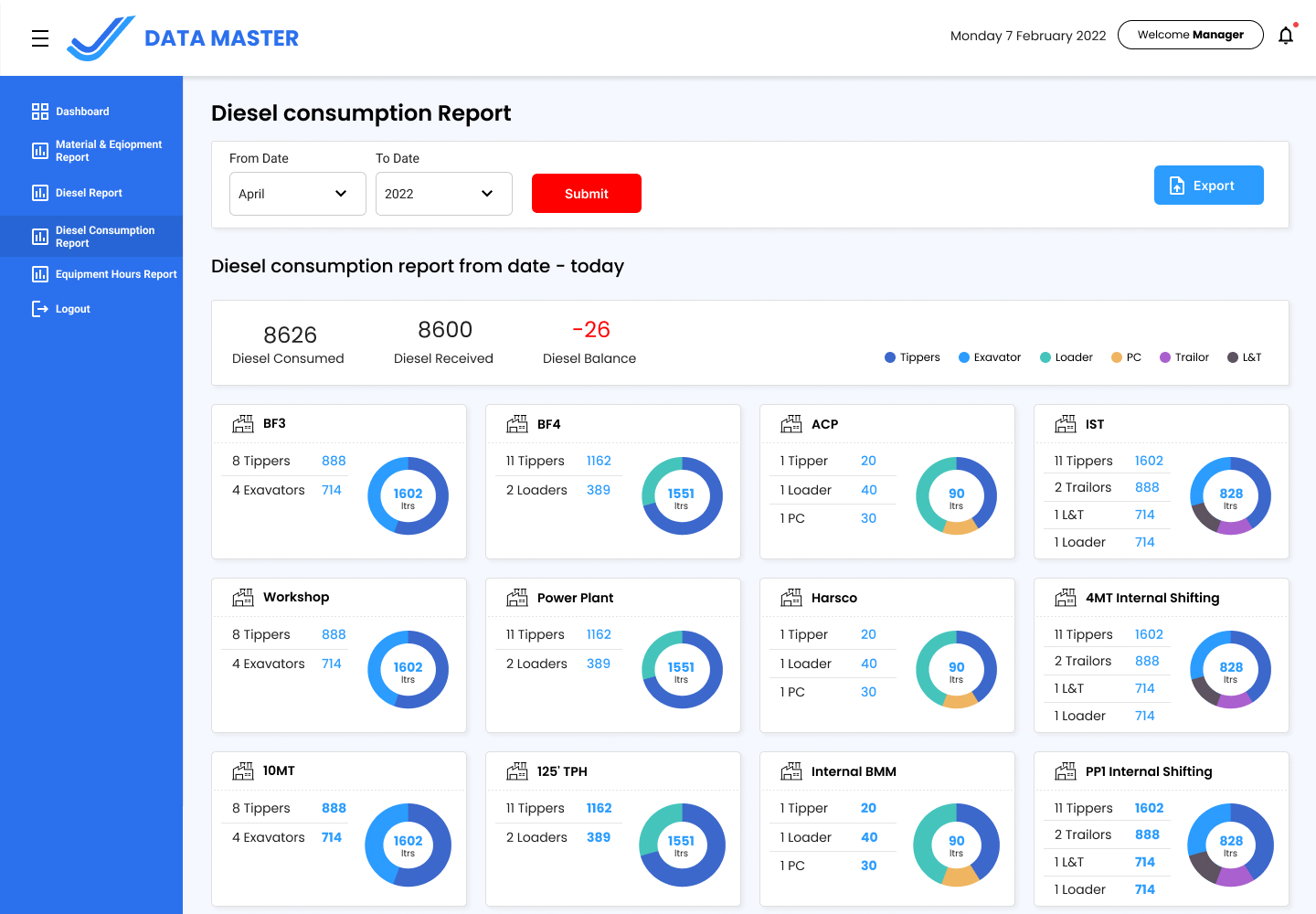
Site-wise Diesel Consumption Report
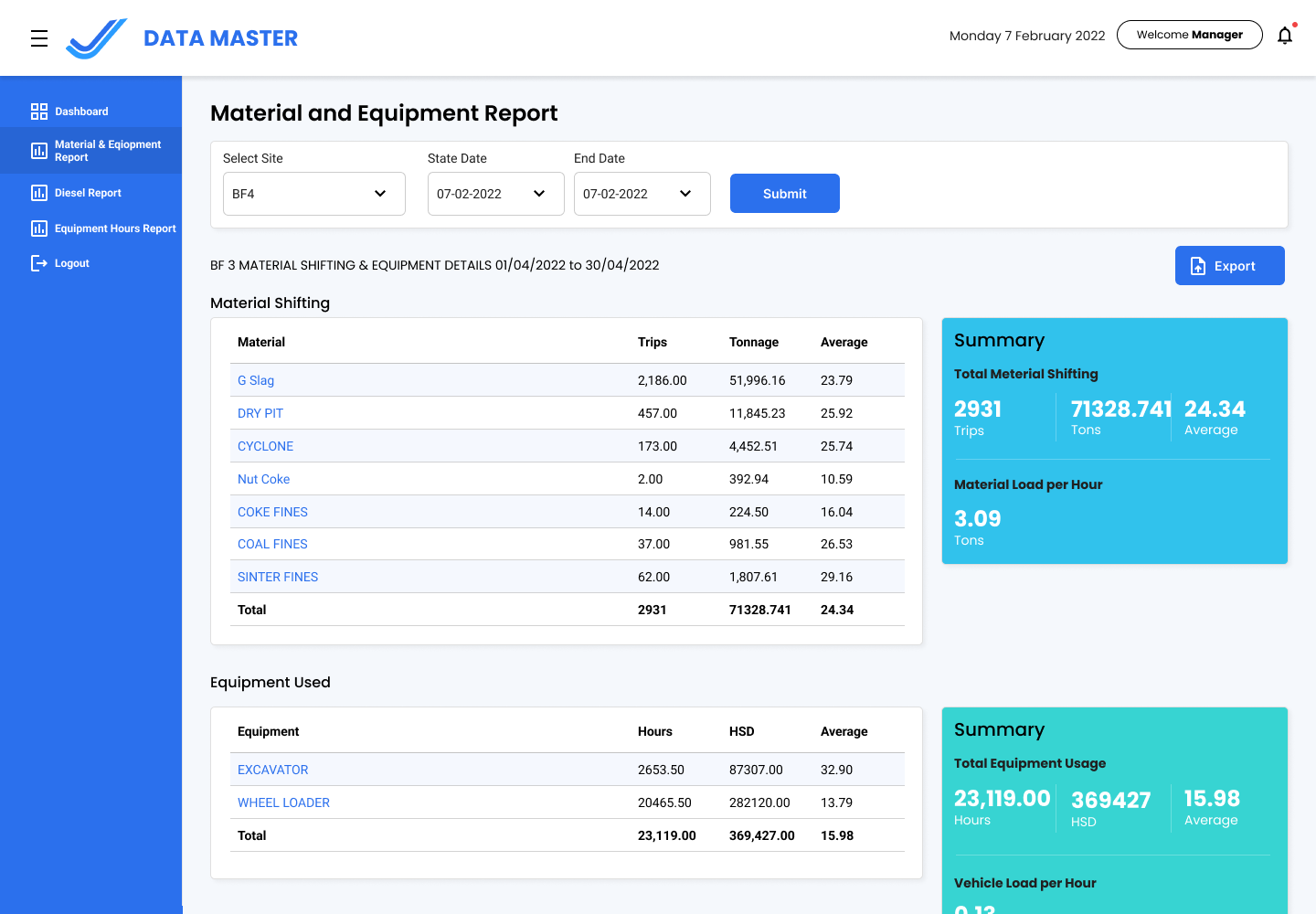
Material and Equipment Report
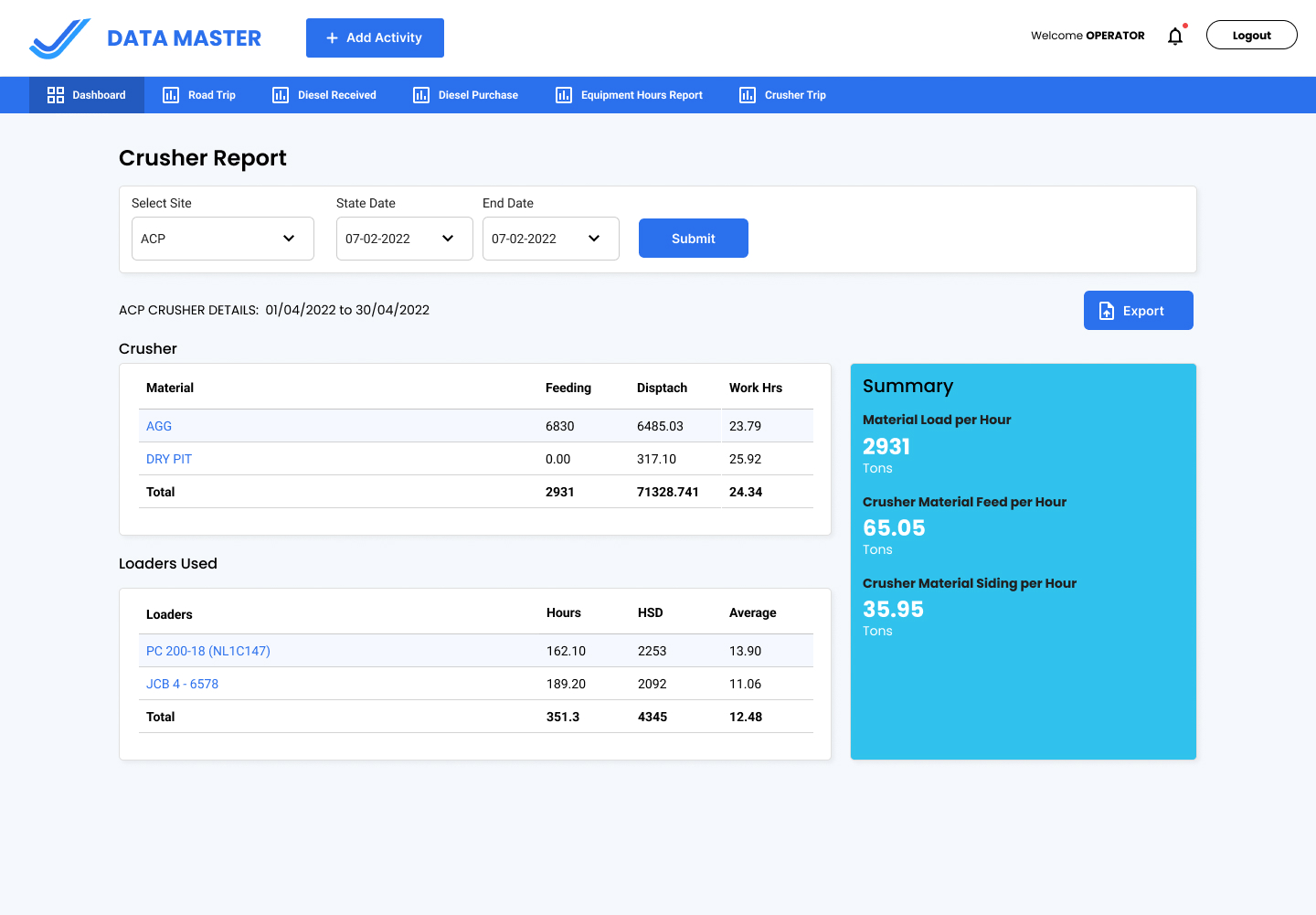
Crusher Report

Manager Dashboard